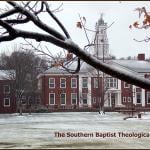“Love is as strong as death, and jealousy as Sheol.” A fine sentiment, but what does it mean? Maybe it means that love is as inevitable as death. We’re all going to die; our last resting place in this creation is the grave. Perhaps Solomon says that love is inevitable in the way death is. But is it? Many go through life longing for love, hoping for love, feeling brief stirrings of love and receiving brief affection in return, but... Read more















